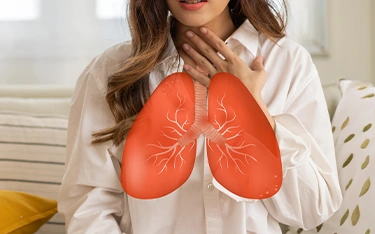Dust allergies can turn everyday activities into discomfort sneezing fits, nasal congestion, itchy eyes, and constant coughing. These reactions are often triggered by exposure to dust mites, pet dander, or pollutants in the air. Instead of relying on antihistamines that offer temporary relief, more people are turning to the best homeopathy medicine for dust allergy for long-term results.
At Dr Batra’s®, we offer personalised homeopathic treatment for dust allergies that targets the root cause, strengthens immunity, and provides long-term relief without side effects. In this blog, we explore the top dust allergy homeopathy medicine options, explain how homeopathy medicine for dust allergy works, and discuss holistic care strategies that treat the root cause naturally.
What is Dust Allergy?
Dust allergy is a hypersensitive immune response to airborne particles such as house dust, dust mites, pet dander, or pollen. This reaction leads to inflammation of the nasal passage, eyes, throat, or skin.
According to the Indian Council of Medical Research, nearly 25% of Indians suffer from allergic rhinitis, most often caused by dust exposure in urban settings.
Insights from a global study
A 2024 study in the International Journal of Homeopathic Sciences highlights that personalised homeopathy effectively manages dust-related allergies such as asthma, eczema, and allergic rhinitis, while reducing reliance on conventional medication and side effects.
Common Symptoms of Dust Allergy
- Sneezing, especially in the morning
- Runny or blocked nose
- Itchy, watery eyes
- Dry cough or wheezing
- Skin irritation or rashes
- Fatigue or poor sleep due to nasal congestion
How Homeopathy Helps with Dust Allergy
Homeopathy offers safe, side-effect-free alternatives to conventional allergy medication. It works by:
- Reducing hypersensitivity to dust allergens
- Strengthening the immune system
- Addressing the root cause of frequent allergic episodes
- Offering personalised remedies based on individual symptoms
- Homeopathy treats immunity from the root
Unlike antihistamines, dust allergy homeopathy medicine does not cause drowsiness or dependency.
Dr Batra’s® pro tip:
If you have a dust allergy, regularly clean your home using a damp cloth, avoid using carpets and stuffed toys, and wash bedding in hot water weekly. Use an air purifier with a HEPA filter, and start homeopathic treatment early to build long-term resistance to allergens.
Best Homeopathy Medicine for Dust Allergy
Some commonly prescribed homeopathy medicine for dust allergy include:
- Arsenicum Album For sneezing, wheezing, and burning nasal discharge
- Allium Cepa For watery discharge and red, irritated eyes
- Pothos an excellent remedy for sneezing that is caused due to dust exposure
Note: Self-medication is not advised. Always consult a certified homeopathic doctor for customised care.




